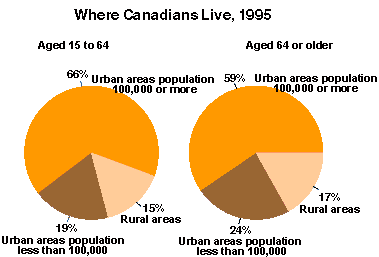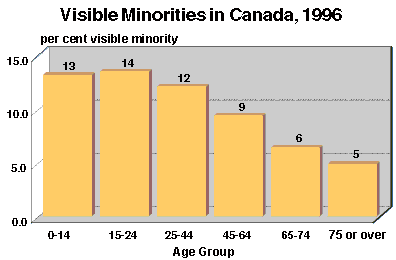 
|
|
Canada's Seniors
At A Glance


 The majority of Seniors Live in Urban Areas
The majority of Seniors Live in Urban Areas
- There are large differences in the proportion of seniors living in
Canadian cities. In Victoria, seniors account for 18 per cent of the
total population, and in St. Catharines-Niagara, for 16 per cent. But
in Calgary, Edmonton, St. John's and Halifax, seniors account for
10 per cent or less of the population.
- The majority of men aged 65 and older live with their spouse. Women
are more likely to live alone, particularly those aged 75 and older.
In 1981, one-quarter of all seniors in Canada lived alone, and it is
projected that by 2001 this proportion will reach one-third.


 Seniors are Becoming a More Diverse Group
Seniors are Becoming a More Diverse Group
- Most seniors under age 75 live with their spouses, independently in
their own homes. But most people aged 80 and older are women, more than
half of whom live alone. The majority of these older women living alone
are poor.
-
Six per cent of seniors belong to visible minority groups, compared
to 13 per cent of persons under age 45. Over the next two decades,
the number of seniors who are members of visible minority groups is
likely to increase, due to changing immigration patterns.
- Only one of every 25 Aboriginal persons is a senior, while one of
every eight non-Aboriginal persons is a senior.

|



